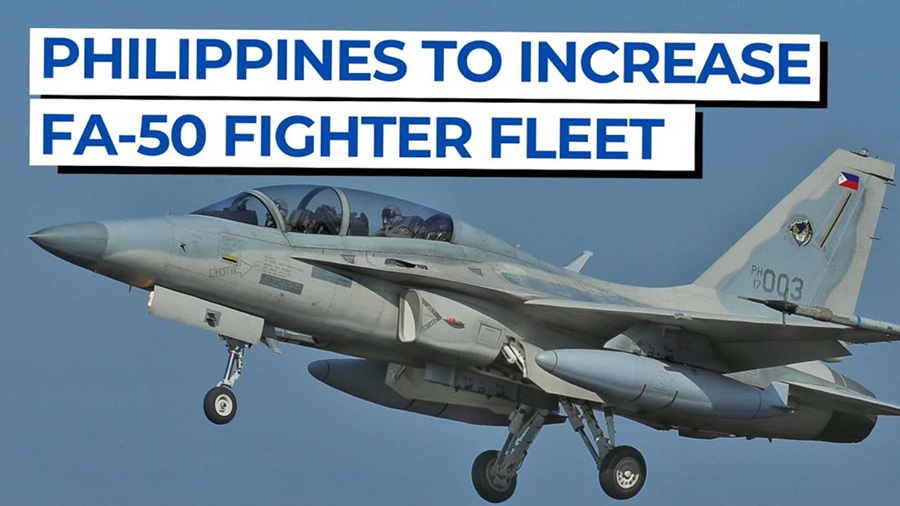The Philippine government has signed a fresh multibillion-peso deal with South Korea to acquire additional FA-50 light combat aircraft, strengthening its air force as tensions continue to simmer in the disputed South China Sea.
The announcement was made on Tuesday by the Department of National Defense (DND), confirming the acquisition of 12 new FA-50PH fighter jets from South Korea’s Korea Aerospace Industries (KAI). This move comes as part of the Philippines' Horizon 3 modernization program, a long-term initiative to enhance its military capabilities in the face of growing regional security challenges.
A Strengthened Partnership
South Korea and the Philippines have enjoyed warm defense ties for years, with the FA-50 already forming the backbone of the Philippine Air Force’s fleet. The FA-50 is a supersonic light combat aircraft designed jointly by KAI and Lockheed Martin, based on the T-50 Golden Eagle trainer.
The new deal, valued at approximately $600 million (around ₱34 billion), includes aircraft, support systems, training, and logistics. The upgraded jets are expected to be delivered between 2026 and 2028 and will feature improved radar systems, longer-range weapons, and enhanced avionics compared to the earlier batch.
Philippine Defense Secretary Gilberto Teodoro Jr. hailed the agreement as a “major step toward achieving credible territorial defense,” stating,
“In these uncertain times, the Philippines must assert its sovereignty and protect its people. This acquisition reflects our deepening cooperation with trusted partners like South Korea.”
Tensions in the South China Sea
This latest move comes against the backdrop of escalating maritime tensions with China in the West Philippine Sea — the area of the South China Sea that falls within the Philippines' Exclusive Economic Zone (EEZ).
In recent months, the Chinese Coast Guard has been accused of aggressive behavior, including water cannon assaults on Philippine supply ships and constructing floating barriers near contested reefs. Just last month, Filipino fishermen reported being chased away from the Scarborough Shoal, prompting widespread criticism from both local officials and international observers.
President Ferdinand “Bongbong” Marcos Jr. has taken a firmer stance on defending national interests, reaffirming security ties with traditional allies like the United States, Japan, and Australia. The procurement of additional FA-50s is seen by analysts as part of a broader strategy to project deterrence without triggering direct confrontation.
The FA-50: Agile and Affordable
The FA-50 is widely considered one of the best options for smaller air forces looking for a cost-effective but capable fighter jet. Its multirole capability allows it to perform air-to-air combat, ground attack, and close air support missions. It is equipped with modern avionics, radar, and weapon systems including precision-guided munitions and AIM-9 Sidewinder missiles.
The Philippine Air Force currently operates 12 FA-50 jets, acquired under a 2014 deal with KAI. Since their induction, these jets have participated in major joint exercises, patrols, and even combat missions against insurgent groups in Mindanao.
Military analyst Chester Cabalza, founder of the International Development and Security Cooperation (IDSC), noted,
“The FA-50 gives the Philippines an edge in terms of response time and regional presence. It’s not just about fighting wars — it's about maintaining visibility in contested areas.”
Regional Security Implications
The new fighter jet deal may raise eyebrows in Beijing, which has repeatedly criticized the Philippines for “militarizing” the South China Sea. China claims almost the entire sea based on its so-called “nine-dash line,” a claim rejected by the 2016 ruling of the Permanent Court of Arbitration in The Hague.
Despite the ruling, China has continued to expand artificial islands and deploy maritime militia, creating frequent flashpoints with regional neighbors. The Philippines, in response, has intensified patrols, filed diplomatic protests, and sought greater interoperability with partner nations.
The expanded FA-50 fleet would allow the Philippines to deploy jets more regularly in areas near Palawan and Luzon, close to hot spots like Second Thomas Shoal and Reed Bank, where encounters with Chinese vessels have become more frequent.
Looking Ahead
While the FA-50s do not match the combat capabilities of heavy fighters like the F-16 or the J-10, their speed, versatility, and affordability make them well-suited for the Philippines' current defense posture.
This latest acquisition reflects not just a procurement decision, but a broader geopolitical message: the Philippines is prepared to defend its territory with resolve, and it values strong regional partnerships in doing so.
As the balance of power continues to shift in the Indo-Pacific, defense cooperation between middle powers like the Philippines and South Korea could play a pivotal role in maintaining peace and stability.
